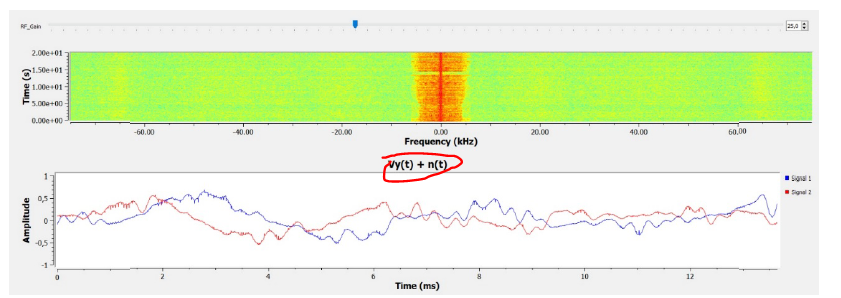I did not remember that I left this thread open :) I will proceed to close it after recording what happened as well as its solution. If I remember correctly, to implement the solution I relied on a Web which I left referenced in my final thesis.
On the other hand, depending on the application for which you specifically use two bladeRF SDRs (since using one as tx and rx this does not happen) this may or may not be a significant problem, clarifying that whenever you use two bladeRF SDRs this problem will probably be present.
Hi everyone, I am having problems when I receive signals using two SDRs (BladeRF - x40), one to transmit and one to receive (I know I can transmit and receive using 1 SDR, but I need the complete schematic transmitter, receiver), the problem is the following, I have a complex signal , with the following values: in-phase component (i(t)) tx = Ac * x(t) quadrature component (q(t)) tx = 0 Vy (t) tx = i(t) + j q(t) TX I send this signal to the channel and therefore it is received by the SDR receiver.
What I receive in the reception is not similar to what I transmitted, because of a tone appears both in its component in phase and in quadrature, by making q(t) rx /≈ q(t) tx /≈ 0.
RX
I send this signal to the channel and therefore it is received by the SDR receiver.
What I receive in the reception is not similar to what I transmitted, because of a tone appears both in its component in phase and in quadrature, by making q(t) rx /≈ q(t) tx /≈ 0.
RX
 For a better compression, I will transmit the following signal x(t) = 0 (equivalent to i(t) tx = 0, q(t) tx = 0), so in theory in reception it would only have noise, but this is not the case.
TX
For a better compression, I will transmit the following signal x(t) = 0 (equivalent to i(t) tx = 0, q(t) tx = 0), so in theory in reception it would only have noise, but this is not the case.
TX
 RX
RX
 When I use a single SDR to transmit and receive this does not happen, I don't know if this is due to some kind of synchronization, but with this problem I can not correctly classify the type of modulation.
BLOCK SDR Transmitter.
When I use a single SDR to transmit and receive this does not happen, I don't know if this is due to some kind of synchronization, but with this problem I can not correctly classify the type of modulation.
BLOCK SDR Transmitter.
 BLOCK SDR Receiver.
BLOCK SDR Receiver.

This is what i am getting (Frecuency Domain) when i am transmitting a message with amplitude = 0 and both SDRs have gain equal to 0
When I increase the gain, that peak increases, in addition another peak appears symmetrical to that one with less amplitude
This does not happen when I transmit and receive with the same sdr, Could this be due to mismatches between both SDRs?
I need help to know how to make it not transmit and receive that unwanted signal. Thank you very much in advance!